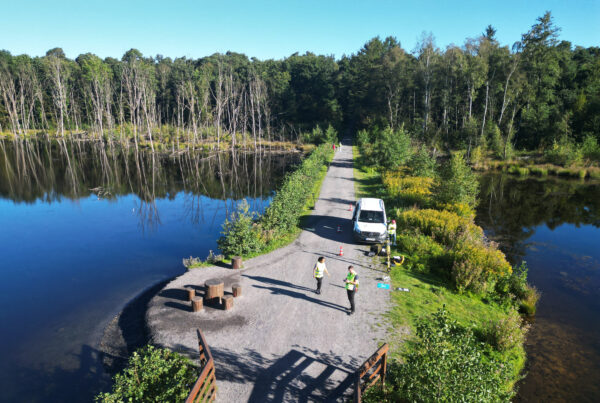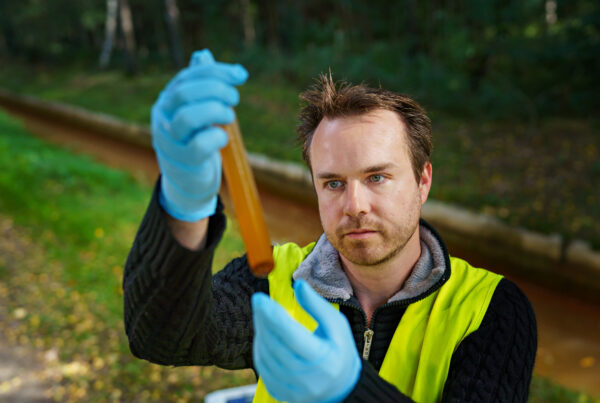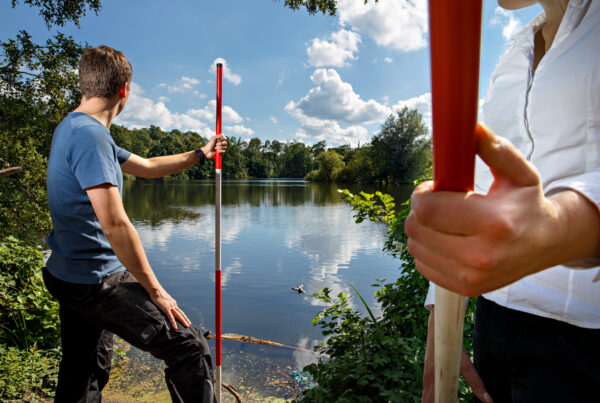A large proportion of natural gas reserves in Germany are stored underground by energy suppliers. Cavern storage facilities are indispensable for gas supply and the operation of distribution networks, especially in northern Germany. The decisive factor is that the safety of the storage facilities against defects, accidents and sabotage must be guaranteed at all times - both above and below ground. “The most important thing is to detect volatilization early and reliably so that the escape of natural gas can be prevented,” explains Prof. Dr. Tobias Rudolph from the Research Center for Post-Mining at Georg Agricola University of Applied Sciences (THGA): ”At the moment, monitoring is carried out during regular inspections with gas detectors or helicopter flights, during which specially trained employees check the facilities. This is often very time-consuming, labor-intensive and costly for the extensive facilities.”
This is where the new “KaMonSys” project comes in: Over the next two years, scientists from the Research Center for Post-Mining in Bochum will be developing a monitoring system that will allow the safety of cavern storage facilities to be monitored even more efficiently. They are combining satellite data with aerial images collected by special drones. To this end, they are working closely together with experts from the EFTAS.GeoIT in Münster. The two project partners provide the appropriate test site: Salzgewinnungsgesellschaft Westfalen mbH in Ahaus and also the Uniper Energy Storage GmbHwhich operates such gas storage facilities in the Epe cavern field in the far north-west of NRW, among other places. The “KaMonSys” (cavern monitoring system) project is being funded by the Federal Ministry of Education and Research as part of the “Research for Civil Security” framework program from September 2020 to August 2022 with around 240,000 euros.
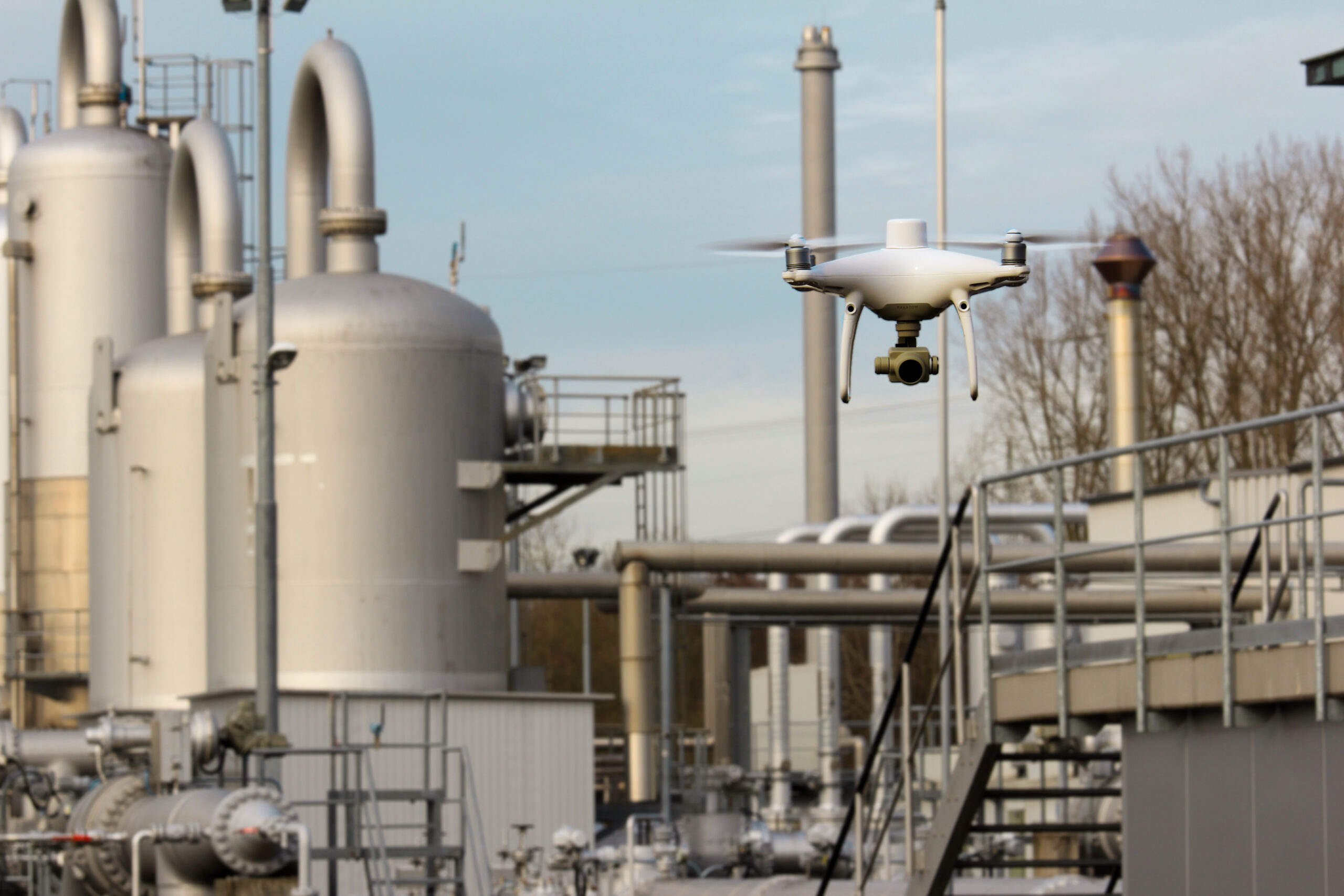
Goals and methods
“In our monitoring system, we want to combine geoscientific analyses with remote sensing methods and safety information from the site itself,” says Prof. Rudolph. In addition to constantly monitoring the technical facilities, the experts evaluate the known underground parameters and continuously combine them with satellite data. A drone is then used on an ad hoc basis to precisely localize possible or detected volatilities.
This drone, a so-called UAS (Unmanned Aerial System), is equipped with several sensors. These include a highly specialized thermal imaging camera, which is designed to detect escaping gas using thermal aerial images based on characteristic temperature differences.
This new, innovative monitoring method generates a wide range of data. The challenge for the scientists involved is to view and digitally evaluate the different pieces of information as a whole. They want to contribute and further use their experience in the long term in order to detect and rectify possible volatilization in a timely and cost-effective manner: “Although the application is initially aimed at gas storage operators,” says Prof. Rudolph. “The results can also be transferred to many other areas that work with gases, gas technology systems and volatile substances with little adaptation effort.”
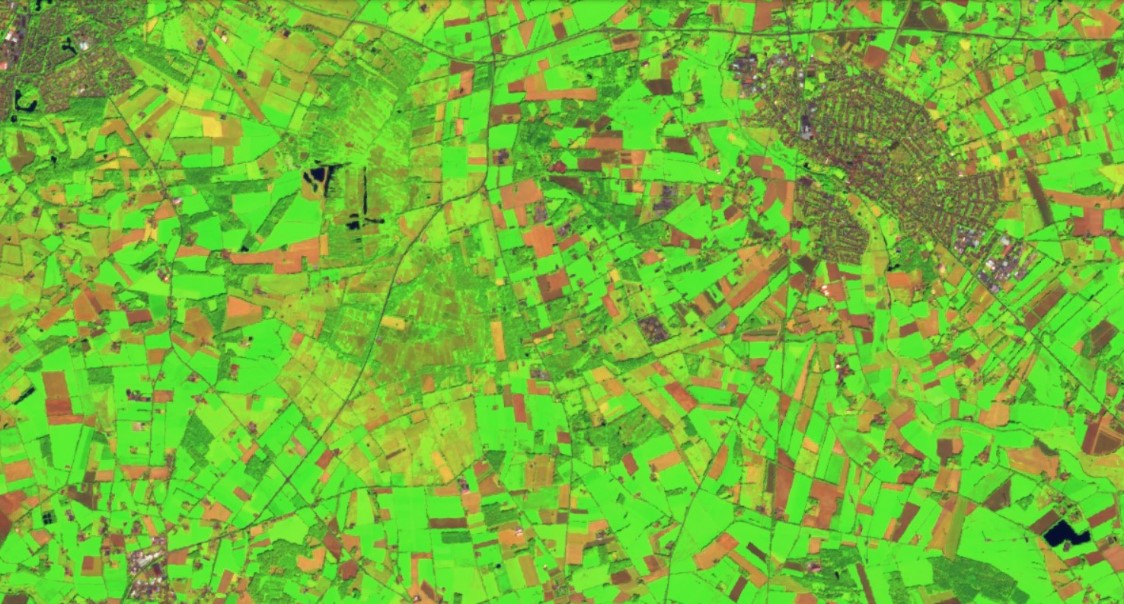
Combined monitoring: the experts combine satellite images such as this aerial view of the investigation site in Epe with drone images and underground data.
© Sentinel-2, 20200731, 11-8-2

FKZ 13N15365
The project is funded by the Federal Ministry of Education and Research in the framework program "Research for Civil Security" from September 2020 to August 2022 with 240,000 Euros.
Contact

Prof. Dr. Tobias Rudolph
Research Center of Post-Mining
Herner Straße 45
44787 Bochum
Building 2, room 101
Phone 0234 986 3682
Mail tobias.rudolph@thga.de


